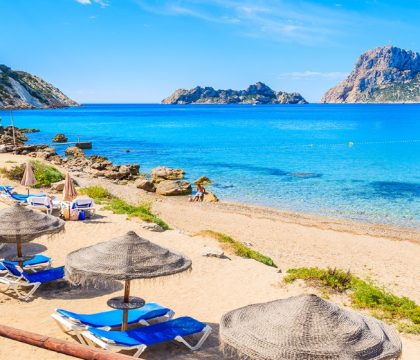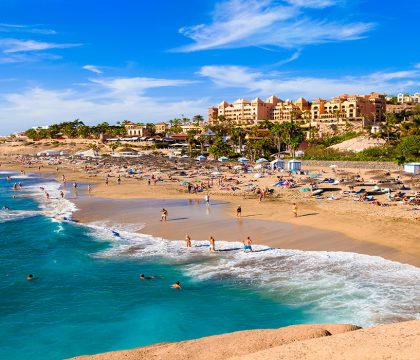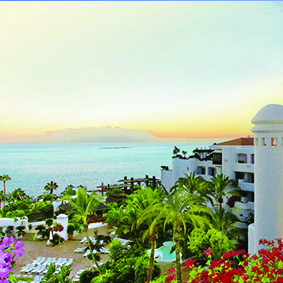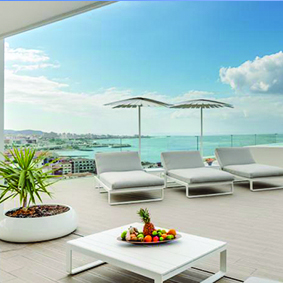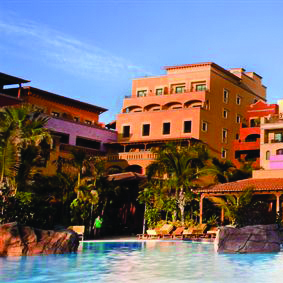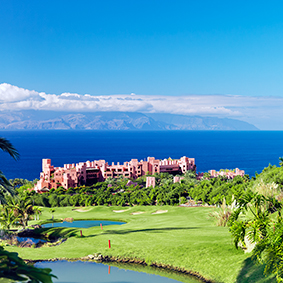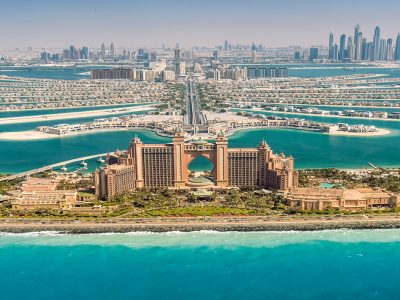OVERVIEW
Drenched in Mediterranean sunshine and awash with delicious cuisine, Spain and the Canary Islands are perfectly equipped for honeymoon indulgences. When you add in the region’s diverse cultural heritage, exquisite architectural triumphs and a variety of stunning landscapes, you’ve got a destination that truly enchants.
Mainland Spain is peppered with fascinating cities, each vibrating with their own individual traditions; drift a couple of hours further south and you’ll find the Africa-adjacent Canary Islands, a group of seven distinct and captivating isles, all with their own unique style. Every corner of Spain and the Canary Islands provides something different, and a honeymoon in this part of the world can be anything you want it to be – from a blissed out beach break in the shadow of an active volcano to a nature-nestled retreat among the mountains or simply a spa-centred city escape laced with lavish luxuries.
Mainland Spain
As one of the largest countries in Europe, there’s plenty of Spain to explore. On the mainland, you’ll find myriad alluring cities boasting dreamy baroque architecture with a plethora of cultural hotspots to lose yourself in. There are also countless sun-drenched beach resorts, lofty mountain escapes and charming countryside hideaways that are perfect for a secluded break. Sample head-spinning flavours in tucked away tapas bars and toast the terracotta sunsets with jugs of scarlet sangria.
Tenerife
With close to a million inhabitants and a land mass of 785 square miles, Tenerife is the largest of the Canary Islands. Characterised by a balmy climate and striking volcanic landscape, this is a place to both relax and explore. Pair chilled out beach days with a hiking tour of Mount Teide – the vast volcano at Tenerife’s heart that is responsible for the distinctive black sand on a handful of the island’s beaches.
Fuerteventura
Known for its long stretches of pristine coastline, Fuerteventura will certainly appeal to beach lovers. Strong seasonal winds whip around the island and serve to stir up a lively surf, so those handy on a longboard will also be in their element here. A vibrant music scene means there are many festivals held throughout the year, while a selection of museums host fascinating exhibitions for you to meander and enjoy.
Gran Canaria
The history of Gran Canaria is closely tied to that of North Africa, with original inhabitants thought to be from the exotic depths of the neighbouring continent. The island has since been populated by people of myriad nationalities, thus lending the place a multicultural vibe that is perceptible in everything from its architecture to its cuisine. Spend time in the capital of Las Palmas de Gran Canaria for flavoursome gastronomy and edgy galleries, or venture out to the sand dunes of Maspalomas for a camel ride beneath the sizzling sun
Lanzarote
The island of Lanzarote is a nature-filled beauty. It was declared a biosphere reserve in 1993 by UN agency UNESCO and boasts the lush Timanfaya National Park on its western coast. A honeymoon here would be incomplete without meandering the Park’s stunning landscape – perhaps follow an organised tour with time in one of the island’s award-winning wineries for a day that is both soul-stirring and indulgent.
La Palma
Another volcanic island, La Palma’s highest peak rises almost 8000 feet above sea level. This mountainous isle is a feast for the eyes, with countless natural wonders to discover. Spend time hiking the pine forests and seeking out tumbling waterfalls, or enjoy exploring the cobblestone streets of the charming capital, Santa Cruz de la Palma. With virtually no light pollution, this is the place to come for stargazing with your special someone.
La Gomera
Gastronomy abounds on the charming isle of La Gomera. The volcanic soil here is rich in nutrients, making it ideal for producing quality crops such as cereals and fruits. Wine-making is especially popular, and when you sample a distinctive local vintage you’ll likely be offered accompanying chunks of locally produced cheese and meat. Another stand-out feature of this particular island is the ancient tradition of whistled speech – used to communicate across vast valleys, it still survives to this day.
El Hierro
As the smallest of the Canary Islands, El Hierro has a population of just under 11,000. Despite its modest size, the island boasts a wealth of attractions that will easily absorb you and you special someone during a sun-soaked honeymoon. Head to the fascinating village of Guinea and wander Spain’s first ecomuseum to learn about 15 centuries of history. For further insight into the island’s heritage, visit Cultural Park El Julan and see if you can decipher the petroglyphs that were left behind by the native Bimbache people.
What is the currency in Spain?
Since joining the EU, Spain and the Canary Islands have all been on the Euro
What language is spoken in Spain?
Spanish is the most widely spoken language in Spain and the Canary Islands, however around 19% of the population speaks Catalan and a number of other minority languages exist such as Galician and Basque
How long does it take to fly to Spain?
Mainland Spain is approximately a 2.5 hour flight from the UK; the Canary Islands can be reached by air from the UK in around 4 hours
What is the time difference in Spain?
Spain is one hour ahead of the UK; there is no time difference between the UK and the Canary Islands
When is the best time to visit Spain?
The landscape of Spain and the Canary Islands varies considerably, so while all parts enjoy a Mediterranean climate, the best time of year to visit can differ slightly according to region. As a general rule, April to October are the best months to plan a trip; the Canary Islands inevitably enjoy greater amounts of winter sun as they are closer to the equator than mainland Spain
Do I need a visa to visit Spain?
UK citizens do not require a visa to travel to Spain and the Canary Islands. For more information on travel entry advice to Spain and the Canary Islands, visit the FCO website here.


